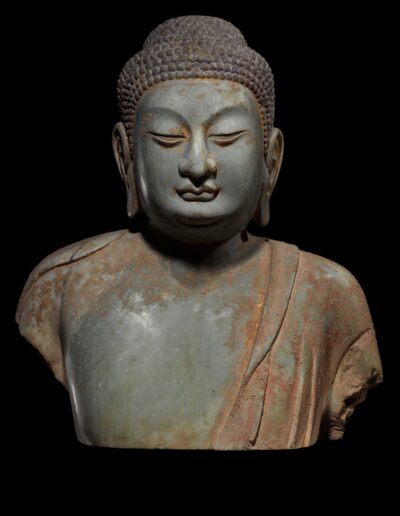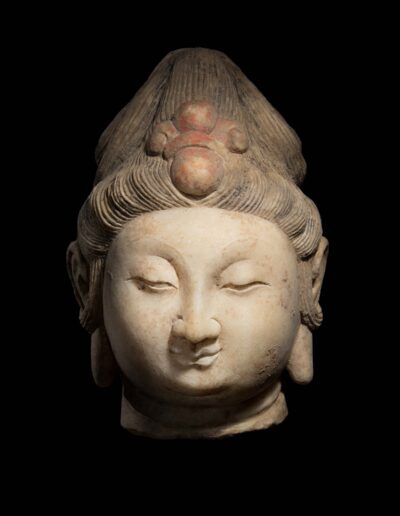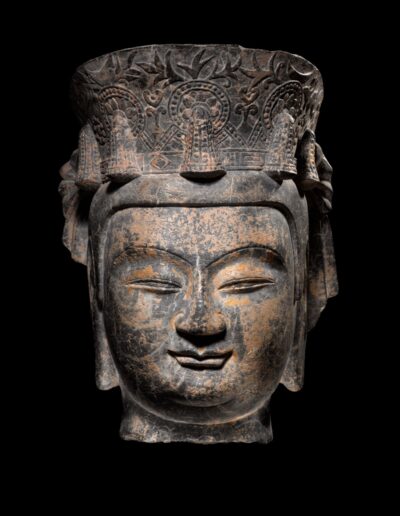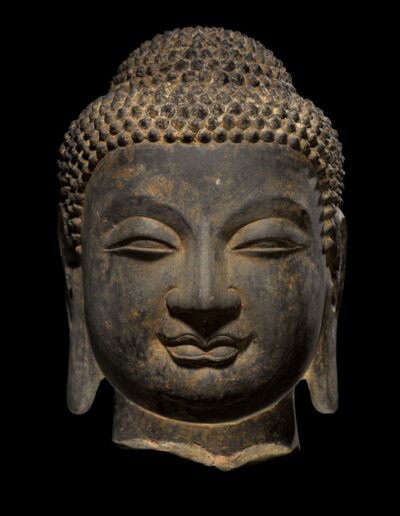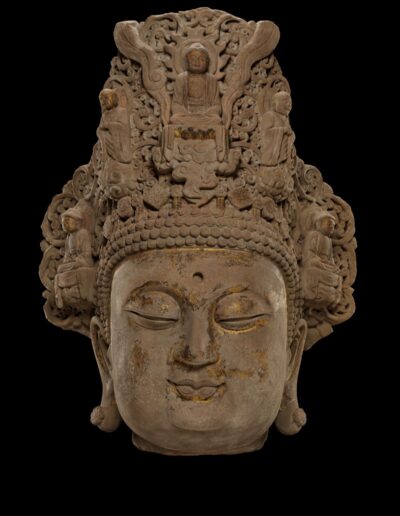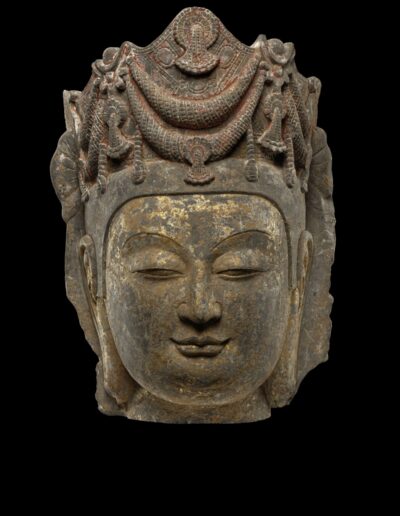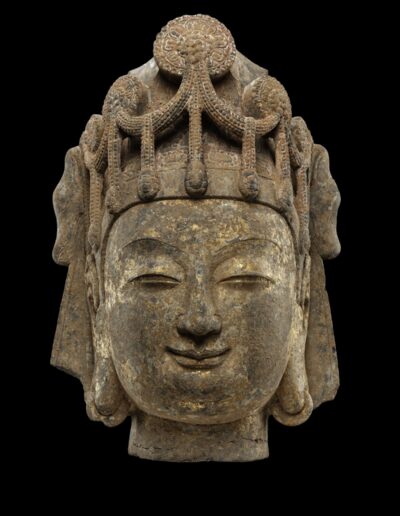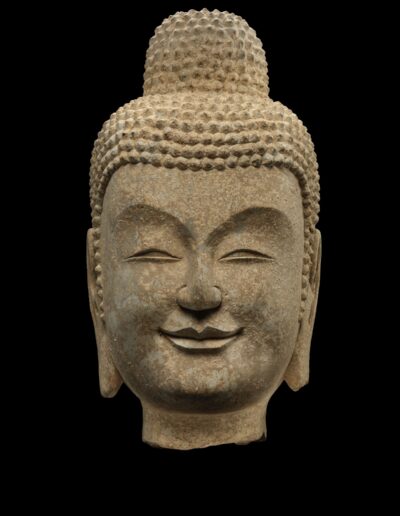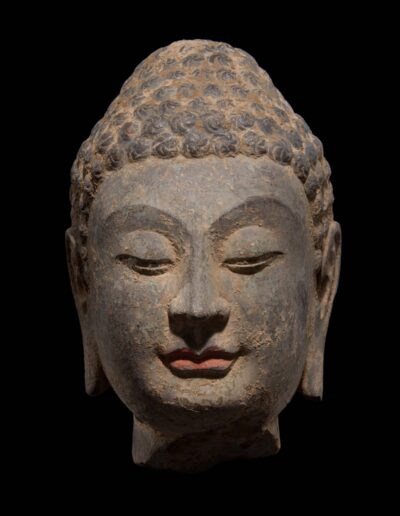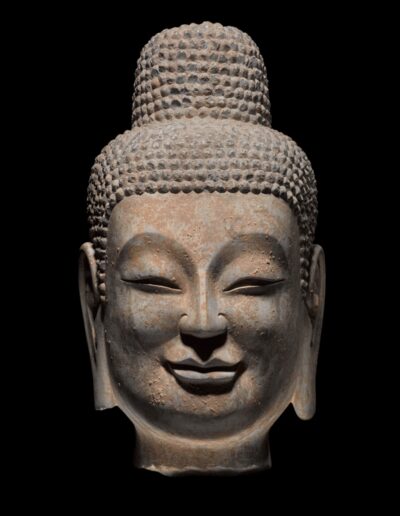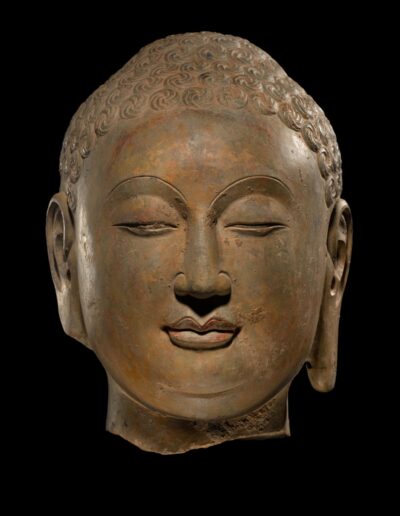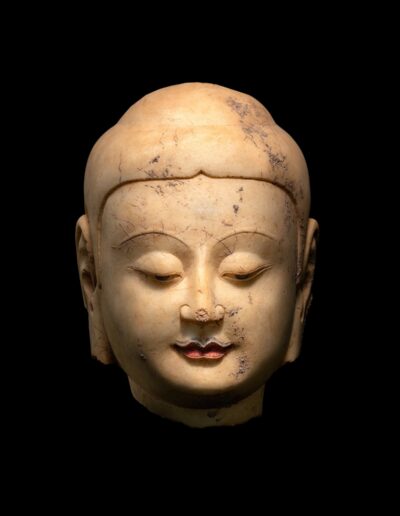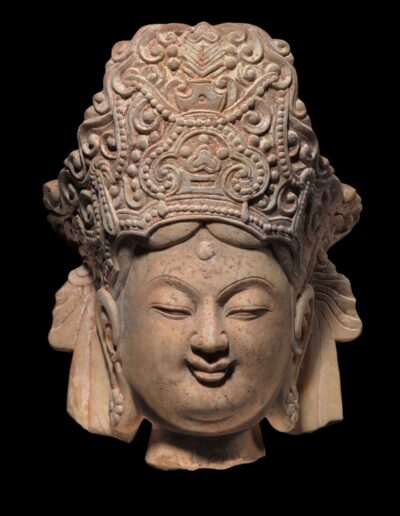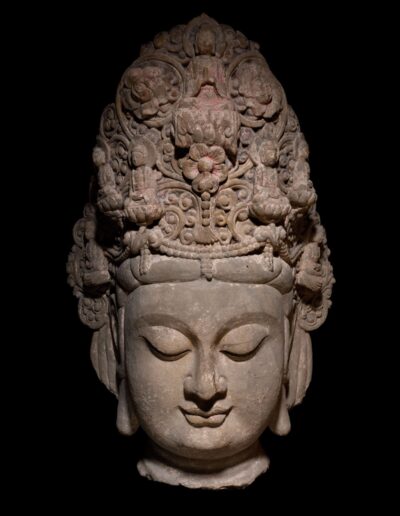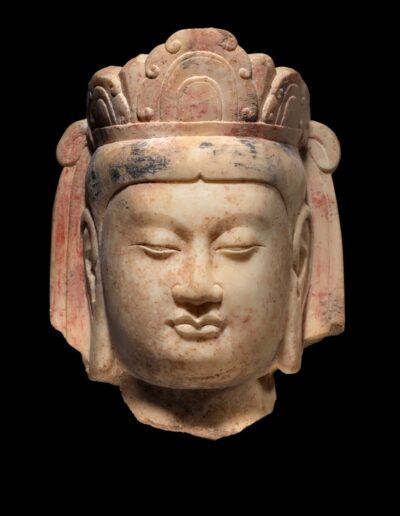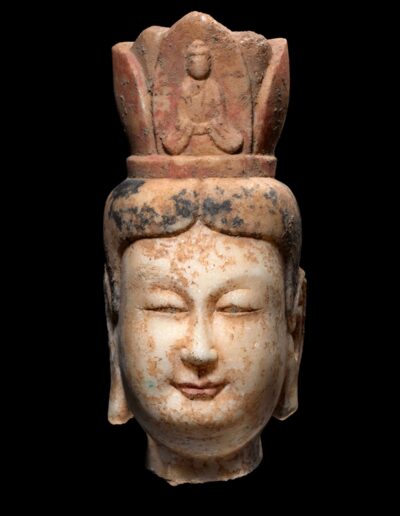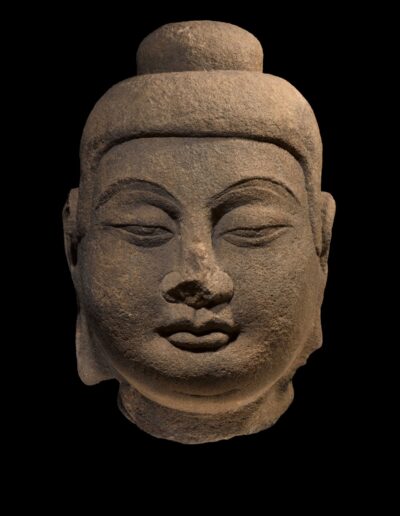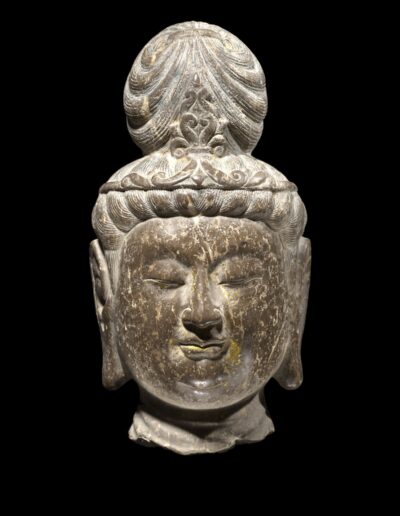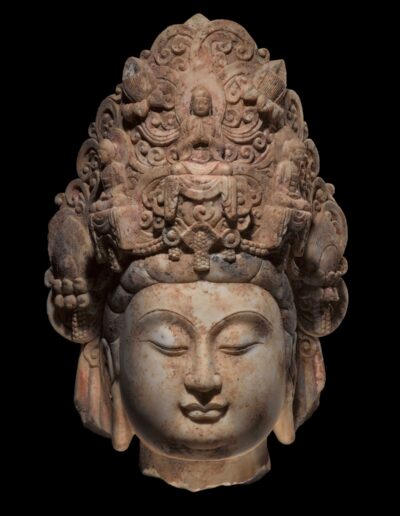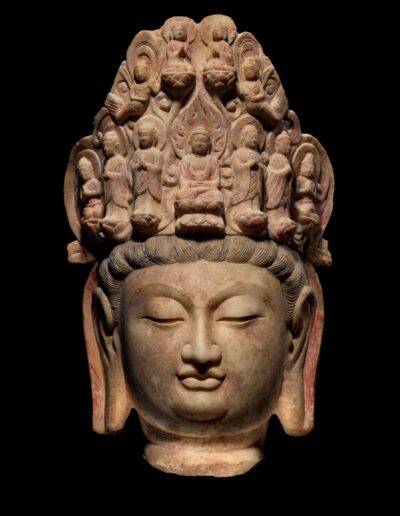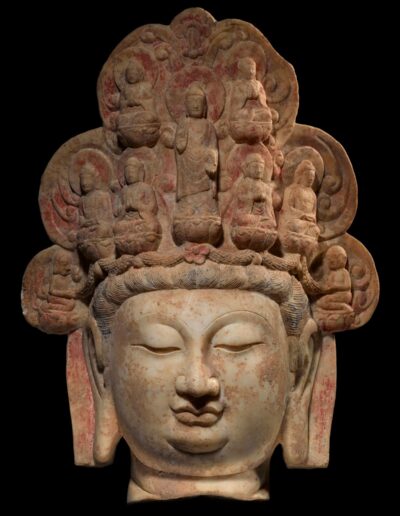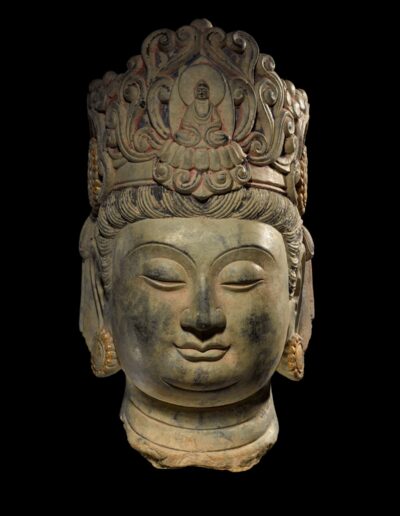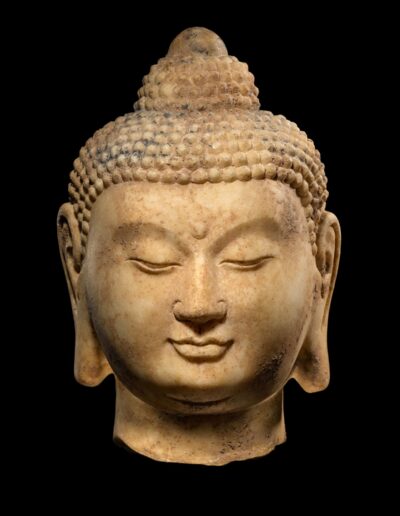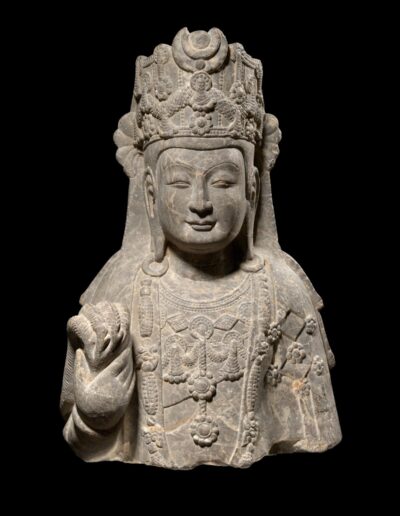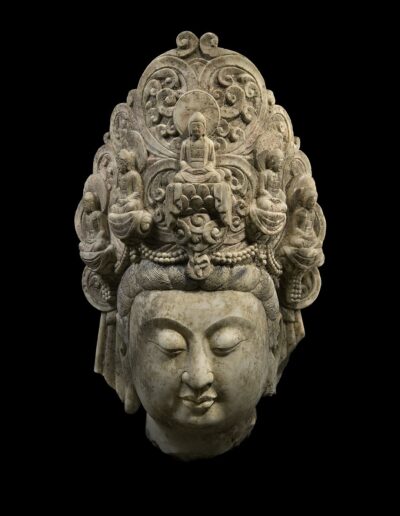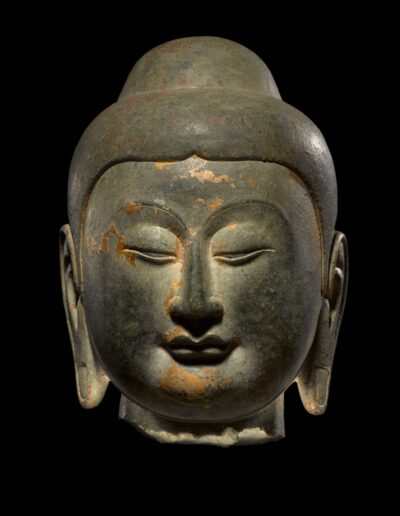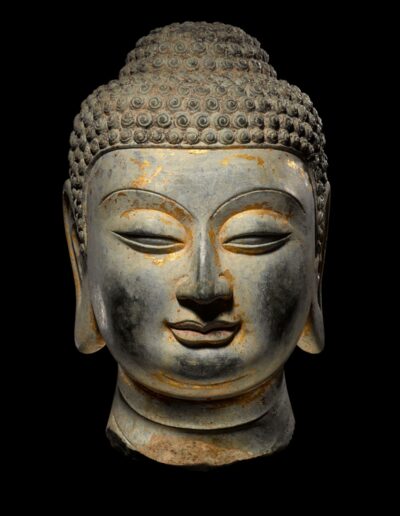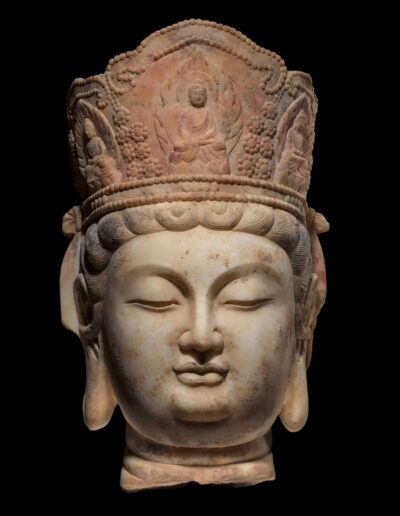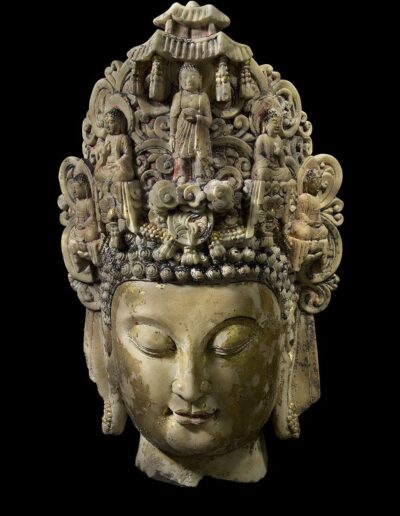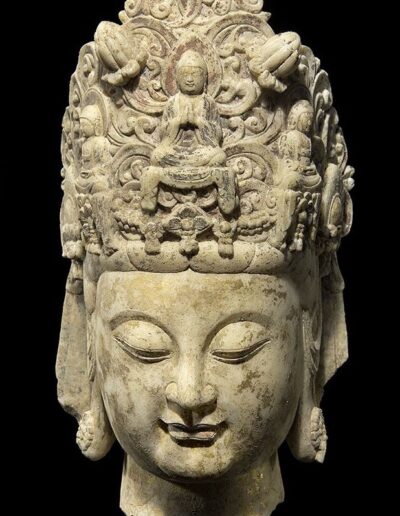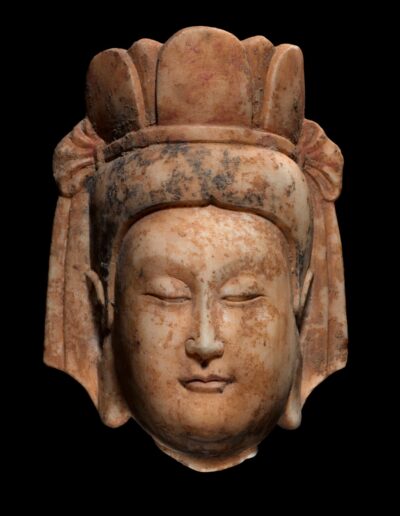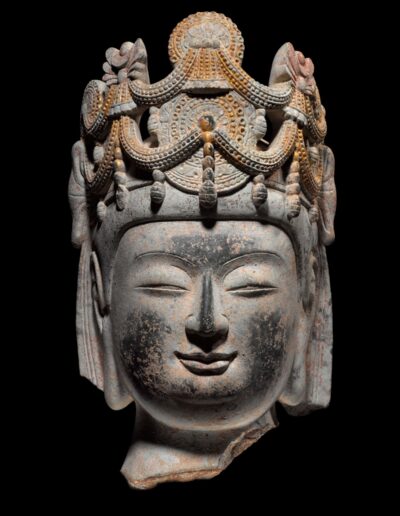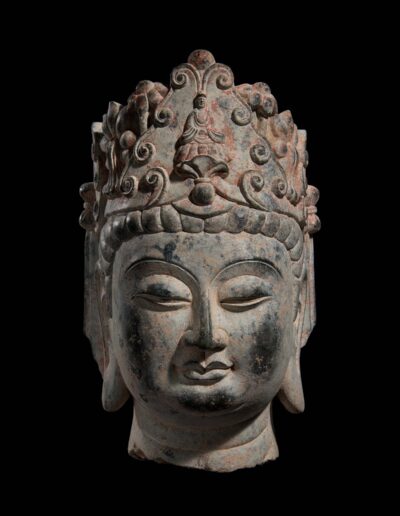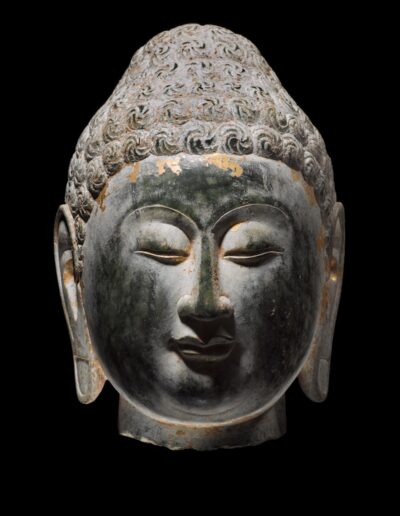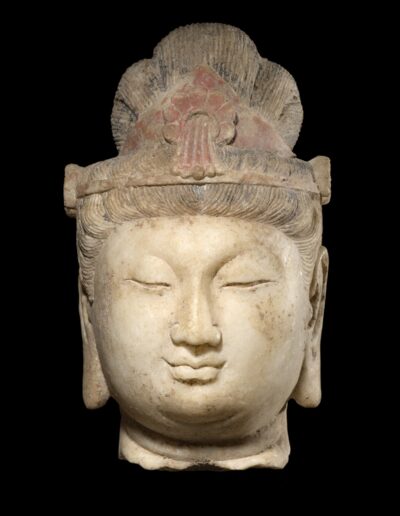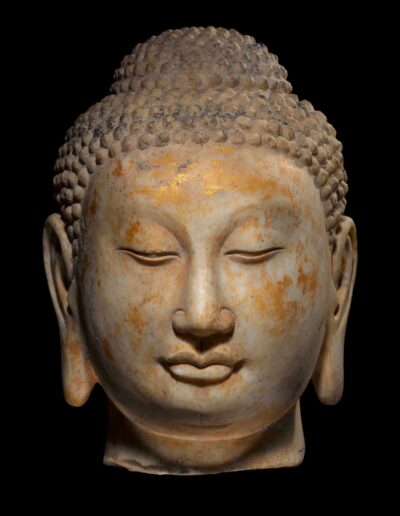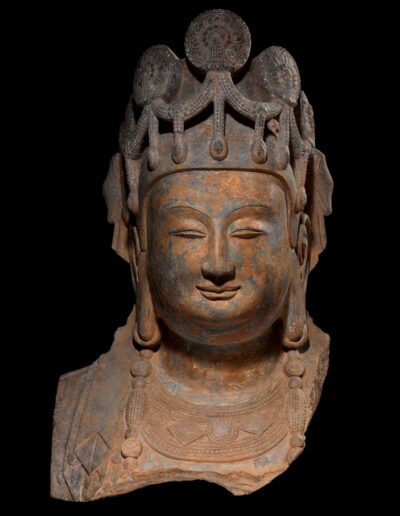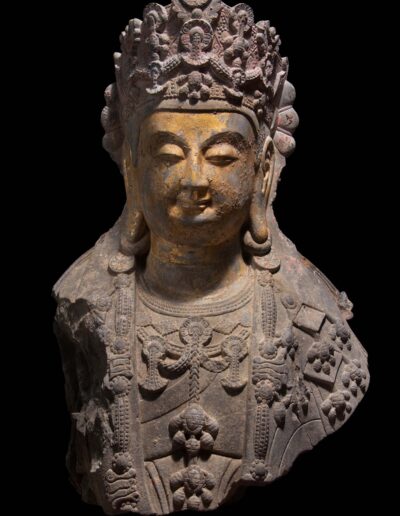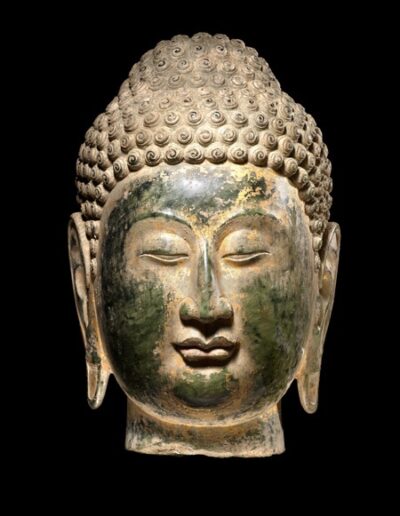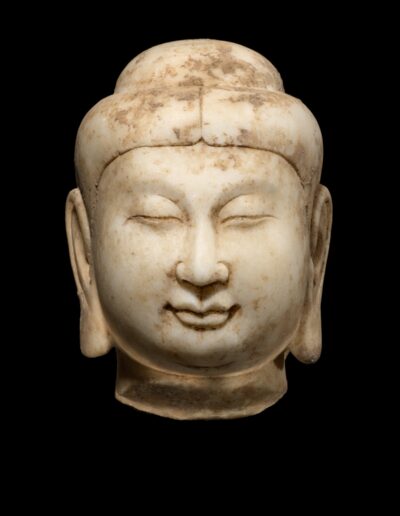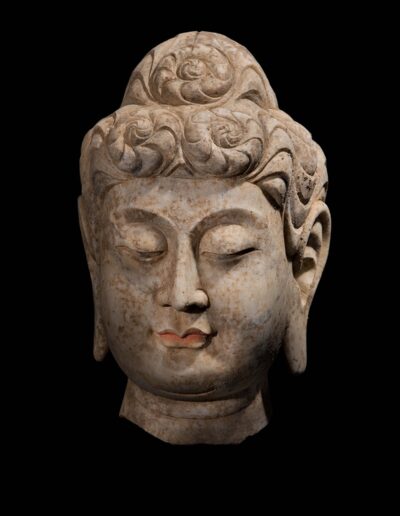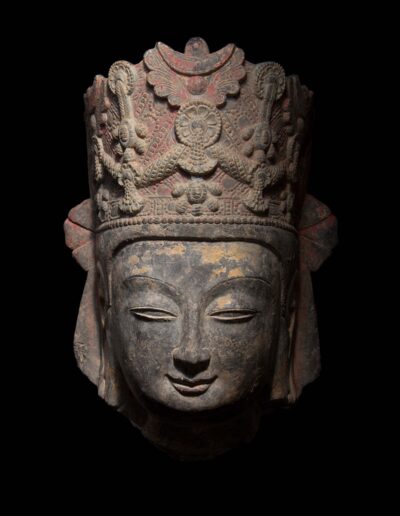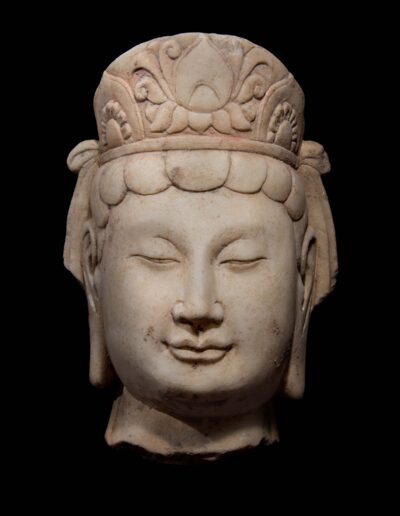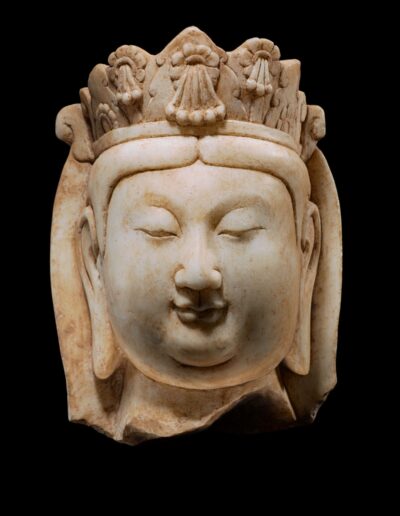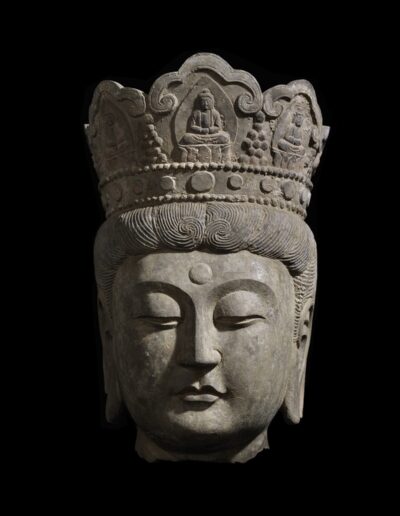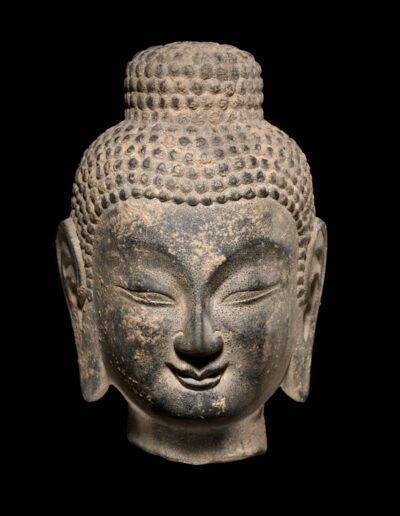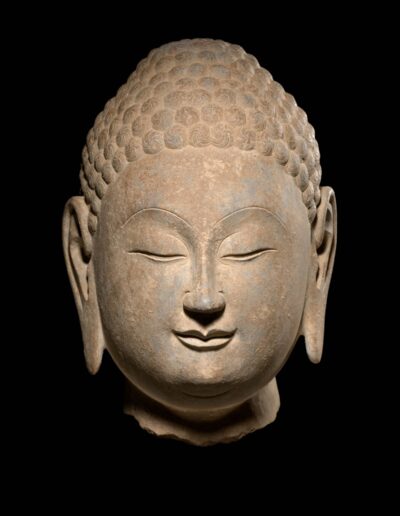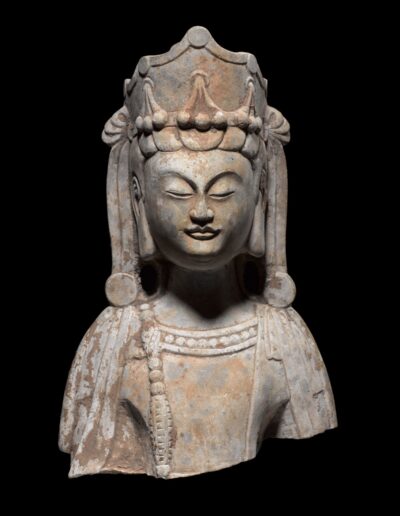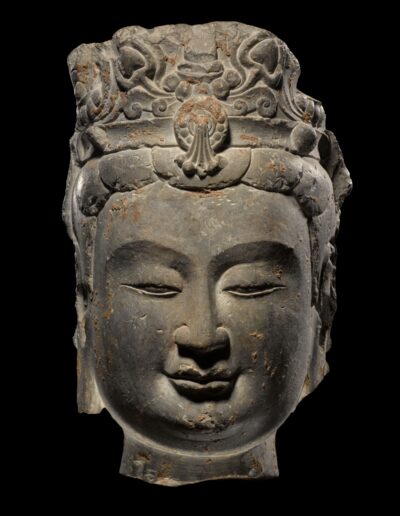Incarnations Exhibit
March 3rd – May 7th, 2022
Incarnations Exhibit Brochure
Complete with the artists’ works, and stock numbers when referencing for purchase.
The busts exhibited range in size from six inches in height, to life-size, to over-sized. The busts are carved either from limestone or marble. While the marble employed in Chinese Buddhist sculptures is usually white, one stunning bust included in the exhibit is carved of a beautiful green marble, perhaps evoking jade. All the busts are exquisitely carved, a testament to the enduring skills of Chinese artists. Hundreds of years of weathering has made the works softer, richer, and even more expressive. The works also radiate a spiritual luminosity rarely found in secular sculptures.
The home of Buddhism is in northern India, but Buddhism spread throughout China from the late third through six centuries. Buddhism triumphed as the national religion of China during the Northern Wei Dynasty. Chinese artists gave the Buddha a new look of robust power and contemplative strength. The sculptures shown in the exhibit have a decided Chinese aura, especially visible in facial expressions of control and meditative calm. The sculptures are testaments to Chinese civilization, of both its ability to learn from other cultural centers—such as India—and to imbue what has been borrowed with distinct Chinese attributes.
On at least three well-documented occasions, there were widespread pogroms in China where Buddhism was disgraced, with armies ransacking Buddhist temples. Many Buddhist sculptures were broken, with the remains buried by monks. In the latter half of the nineteenth century, a tumultuous period in China, there was an increased awareness of the historical importance of antiquities, on the one hand, and burgeoning supply of artifacts, on the other hand. Sculpture, while still far from being an object of aesthetic appreciation, began to receive attention. In 1906, the Museum of Fine Arts, Boston, purchased an ancient standing Bodhisattva. In the 1930s, exports of Chinese art were all but halted by civil war and the Japanese invasion. With the founding of the People’s Republic in 1949, exports of antiquities became impossible until the opening of China in the late twentieth century. The Buddhist sculptures shown in this exhibit were collected over a seven-year period, from 1998-2005. They were purchased from private collections in Hong Kong and in the United States. The origin of nearly all the works is surely from the Shandong region. In 1996, a large cache of nearly 400 statues, most of which were broken, was recovered from a pit in the Qingzhou municipality of Shandong province. Hundreds of other, but similar, sculptures have been salvaged under more haphazard conditions in the same region.
While each individual bust in the exhibit is special, gathering a large group together enables us to have a fuller appreciation for the aesthetic role of Buddhism in Chinese culture. It is a wonderful ensemble and deserves to be viewed.

